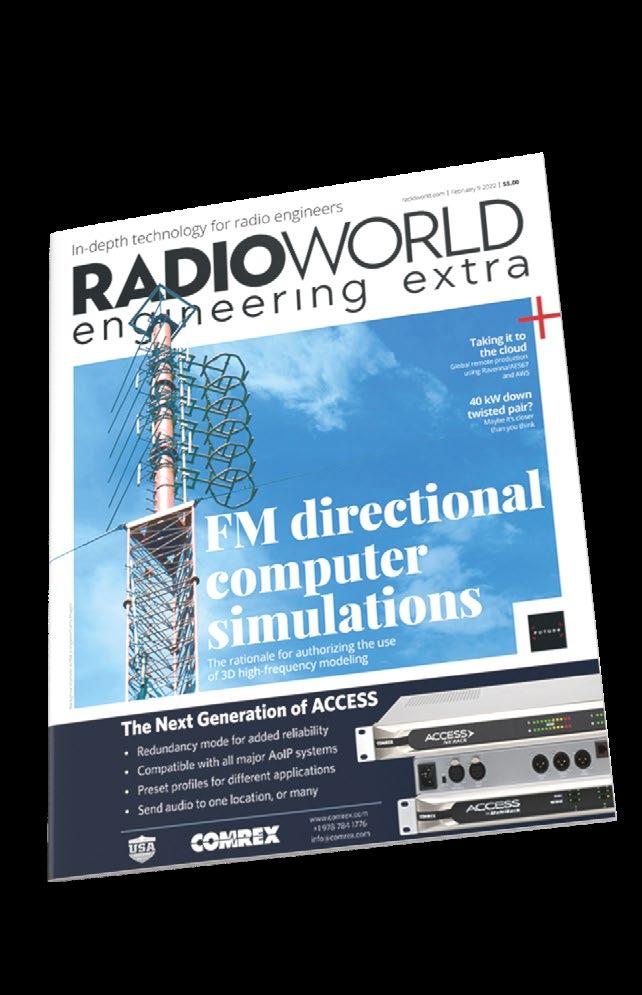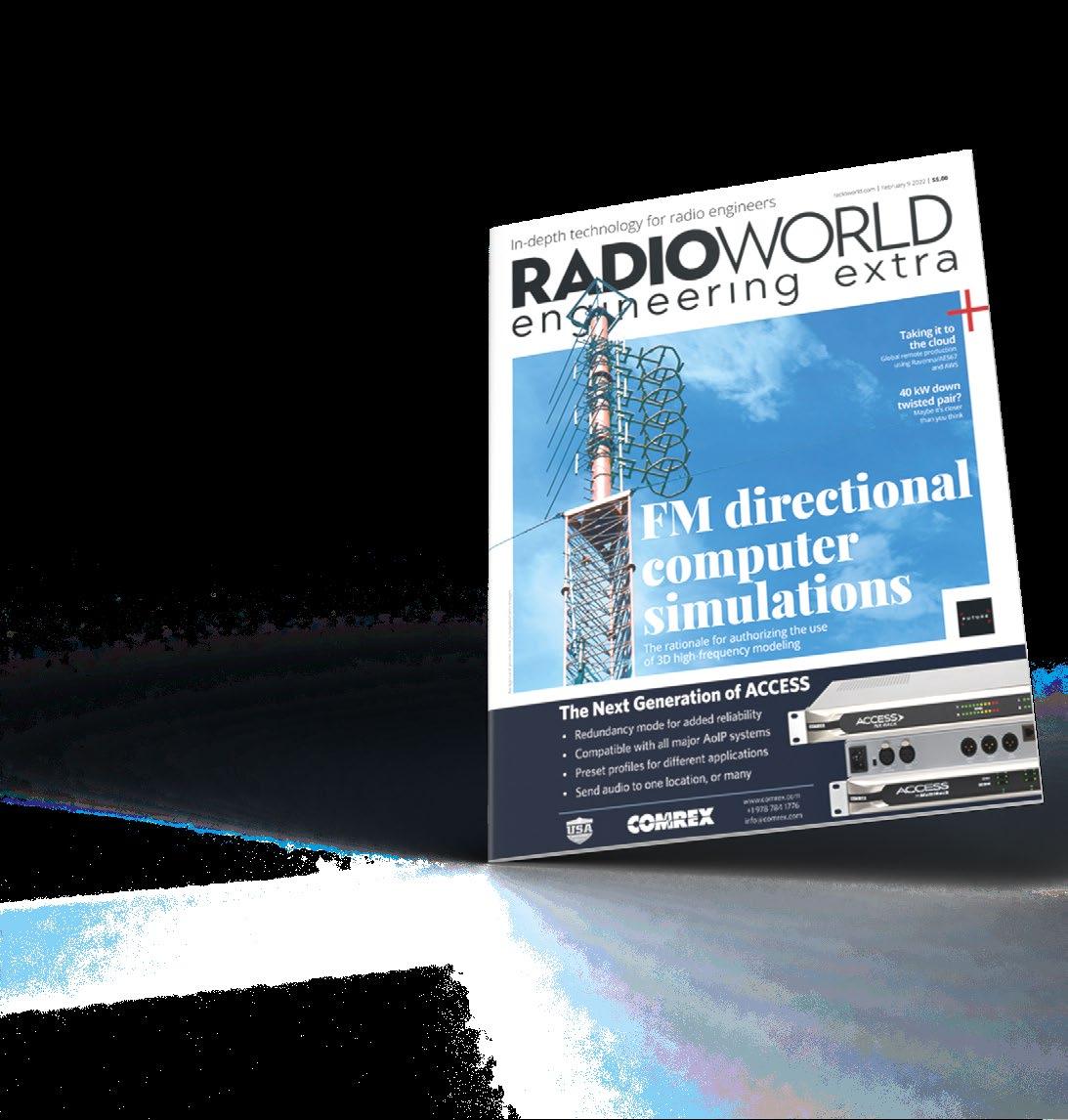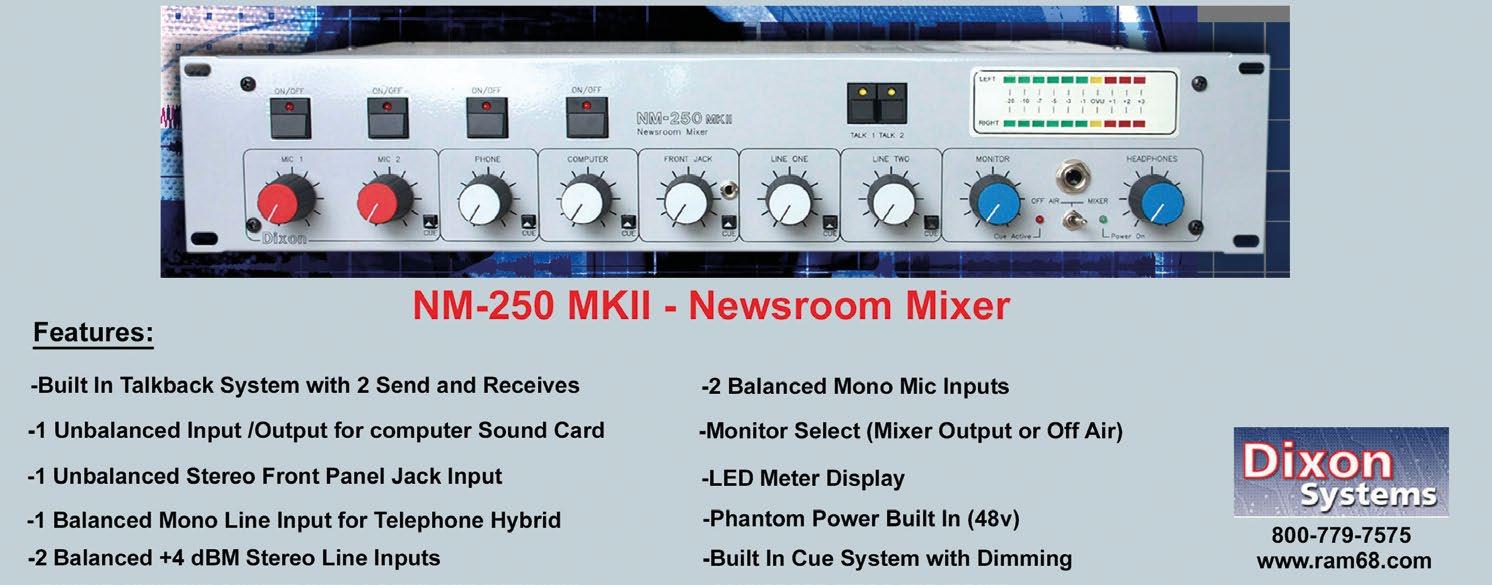
3 minute read
NAB supports directional FM modeling

But it asks the FCC to put guardrails in place
The National Association of Broadcasters supports the idea of allowing computer simulations for FM antenna directional patterns.
“NAB believes that computational simulation of FM directional antennas is already mature and can produce comparable accuracy to physical measurements, thus minimizing the potential for new interference,” it wrote in comments filed with the Federal Communications Commission this winter.
But it cautioned that “electromagnetic modeling software is complex, can be subject to manipulation, and limited by the accuracy and completeness of the input data.”
In November the commission opened an NPRM and proposed to permit the modeling. The change was urged in a joint petition from Dielectric, Jampro, Radio Frequency Systems and Shively Labs, as well as broadcaster Educational Media Foundation.
The most common reason to use a directional antenna by a commercial full-power FM station is to allow it to “short-space” to another FM station while maintaining contour protection to that station.
NAB urged the FCC to require that full documentation of the underlying data and its sources be available to the commission and to “interested parties upon request.”
It wants the FCC to require the following: a statement of the qualifications of the people responsible for modeling; a complete description of the antenna system; limits of 15 dB max/min in the azimuth plane and of 2 dB/10-degree rate-of-change in the azimuth plane; and certification by a licensed land surveyor or equivalent that the antenna is oriented properly and installed at the correct height.
“The position of the antenna on the supporting structure, including its height, offset from the structure and orientation are perhaps the most important input variables to the computer model. Even small discrepancies in the installed antenna, such as orientation with respect to Magnetic North rather than True North, or shifting the height by a few feet during installation to avoid a gusset plate on the tower, can result in significant changes to the radiation pattern and will require that the model be updated and rerun. Therefore, a licensed individual must certify the proper installation of the antenna.”
For more on this subject, see the cover story of the Feb. 9 issue of Radio World Engineering Extra. Read it at radioworld. com/digital-editions.
Continued from page 25 the production staff and engineers to keep the station plant running so the processing can do its job properly when fed with consistent audio input levels.
Audio pads
The original +8 dBm standard evolved to +4 dBm and now 0 dBm on some studio devices. Many, but not all, analog audio routing switches have audio level controls. If the ones you encounter do not, you should install resistive audio pads to bring higher-level sources down to match the lowest level in the facility.
Fig. 5 shows a simple balanced audio pad. It assumes the audio source has a low drive impedance and all devices being fed by it are bridging (10K ohm or higher input Comment
on this or any article. Write to radioworld@ futurenet.com. impedance). The values chosen are standard and are 1/4 watt resistors or larger. Make it variable by substituting a 5000-ohm variable resistor for the 2200-ohm fixed resistor.
Today, many studios have a mix of traditional analog on punchblocks and StudioHub on Cat 5. The next step is AoIP, or audio over internet protocol. Audio levels can get out of hand if all sources are not matched.
What about podcasts?
Podcasts typically come to me without any audio processing and often have 10 dB or more disparities between voices during an interview. Some operators deliberately adjust audio level to emphasize a point. This doesn’t go well when listening in a car with high ambient noise. No listener should have to crank the volume up and down to follow the content. I’ve also noticed a 10 dB or more level difference from one podcast to another, even from one episode to another. Automobile manufacturers should look into simple audio processing for non-processed material like podcasts and CDs. That could enhance the user experience in a noisy road environment. Consistency is the key to good audio. Take pride in the sound of the facilities you work on. Radio depends on keeping listeners.




